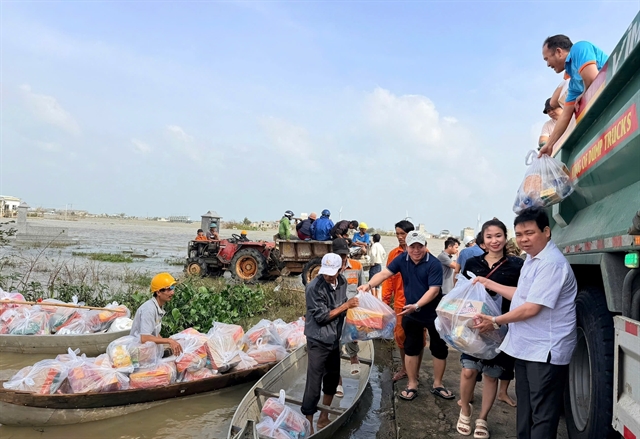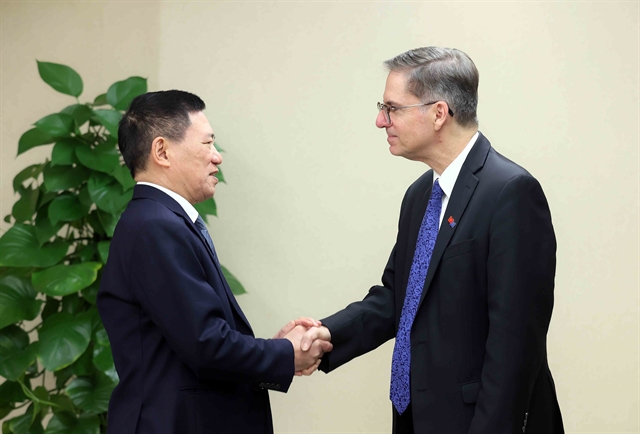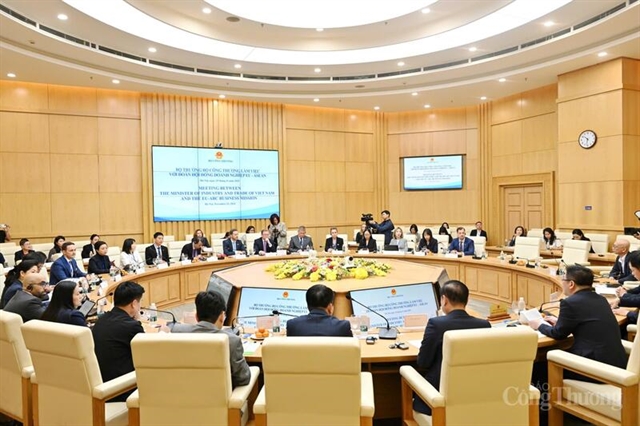 Society
Society

.jpg)
|
| Đà Nẵng welcomes a large influx of cruise tourists to the city. — VNA/VNS Photos |
HÀ NỘI — Việt Nam has expanded its visa exemption policy to citizens of 15 countries, marking a strategic move to strengthen the nation's competitiveness in global tourism and investment.
Under Resolution No. 44/NQ-CP issued on March 7, citizens from Germany, France, Italy, Spain, the United Kingdom, Russia, Japan, South Korea, Denmark, Sweden, Norway, Finland, Poland, the Czech Republic and Switzerland will be granted visa-free entry to Việt Nam.
Earlier, from January 15, Poland, the Czech Republic and Switzerland had already been granted visa waivers as part of Việt Nam’s 2025 tourism stimulus programme.
“A flexible visa policy is an essential instrument to elevate a country’s appeal as a destination,” said Hà Văn Siêu, Deputy Director-General of the Việt Nam National Authority of Tourism under the Ministry of Culture, Sports and Tourism.
“It positions Việt Nam to better compete with other nations, while also signalling our readiness to welcome the world.”
Beyond tourism, the updated visa strategy is aimed at enticing international talent, high-net-worth travellers and foreign investors – individuals who bring long-term value to the economy. According to Siêu, this is not merely a question of to waive or not to waive, but about strategically targeting key segments and optimising the benefits from international arrivals.
The approach is in line with the Politburo’s directive to prioritise the attraction of scientists and international experts in support of Việt Nam’s science and technology goals.
“Việt Nam needs a red-carpet approach, streamlined procedures that make it easier for experts to come, work, and contribute over the long term,” Siêu added.
Foreign direct investors are also a core focus of the policy shift.
Siêu emphasised the need for Việt Nam to offer long-term visas, such as five-year or ten-year options, to help investors feel welcome and committed to the market.
Việt Nam is equally eyeing the high-end traveller demographic – high-income tourists willing to invest in premium services, resort real estate or business ventures.
He said that an open-door policy must be accompanied by efforts to retain affluent visitors and generate long-term value from their presence.
The recent visa exemptions in Poland, for instance, has pushed tourism ties between the two countries.
Việt Nam’s Ambassador to Poland, Hà Hoàng Hải, said that in the first two months of 2025 alone, more than 21,000 Polish tourists visited Việt Nam, a promising signal for further growth.
LOT Polish Airlines has already resumed charter flights bringing visitors to destinations such as Đà Nẵng, Phú Quốc and Nha Trang and is looking to re-establish direct routes between Poland and Việt Nam.
In June, Việt Nam’s Ministry of Culture, Sports and Tourism will organise a promotional programme in Poland to further boost awareness and travel demand.
Siêu said the expanding collaboration with Polish airlines demonstrates how visa policies can unlock broader economic and trade prospects.
Industry experts warn that visa exemption is just one part of the tourism equation.
While competitors like Thailand, Indonesia, and Malaysia use visa waivers to attract visitors, their lasting appeal comes from professional services, diverse attractions, and strong marketing.
“Visa-free entry gets people here, but retaining them is the real challenge,” Siêu noted, stressing the need for smooth immigration, efficient transport and high-quality services.

|
| Quảng Ninh Province's leader presents souvenirs to the couple who are Quảng Ninh’s three millionth international visitors. |
Without improvements to infrastructure, service standards, and destination branding, Việt Nam could lose ground to regional rivals. Airport congestion, subpar hotel services, and poor transport links risk undermining the benefits of visa liberalisation.
Despite natural assets like Hạ Long Bay, Hội An, and Phú Quốc, Siêu warned that scenery alone won’t drive growth, calling instead for world-class service and a seamless visitor experience.
Towards smarter visas
Việt Nam is now moving towards a smart visa model to attract high-value groups, including experts, investors and affluent travellers.
“We are designing policies to bring in people who offer knowledge, capital, and innovation,” Siêu said.
Efforts include expanding digital tools such as biometric screening and e-visas to enhance convenience.
With an ambitious goal of welcoming up to 23 million international visitors by 2025, success will depend on cross-sector collaboration, from tourism and diplomacy to infrastructure.
He said that Việt Nam must shift its mindset. “In today’s competitive world, visa policy must be part of a broader strategy to make Việt Nam a destination for investment, creativity and growth.”
Citing Thailand’s high rate of repeat visitors and Japan’s appeal despite limited visa waivers, he said Việt Nam needs more than visa-free travel and affordable prices.
He said the priority is to develop a world-class tourism ecosystem that encourages repeat visits, noting that visa waivers are merely the starting point, with true success depending on the experience awaiting visitors beyond entry.
In the first quarter of the year, Việt Nam has seen over 6 million foreign arrivals, the most for any single quarter in history, marking a positive start for the year. — VNS




